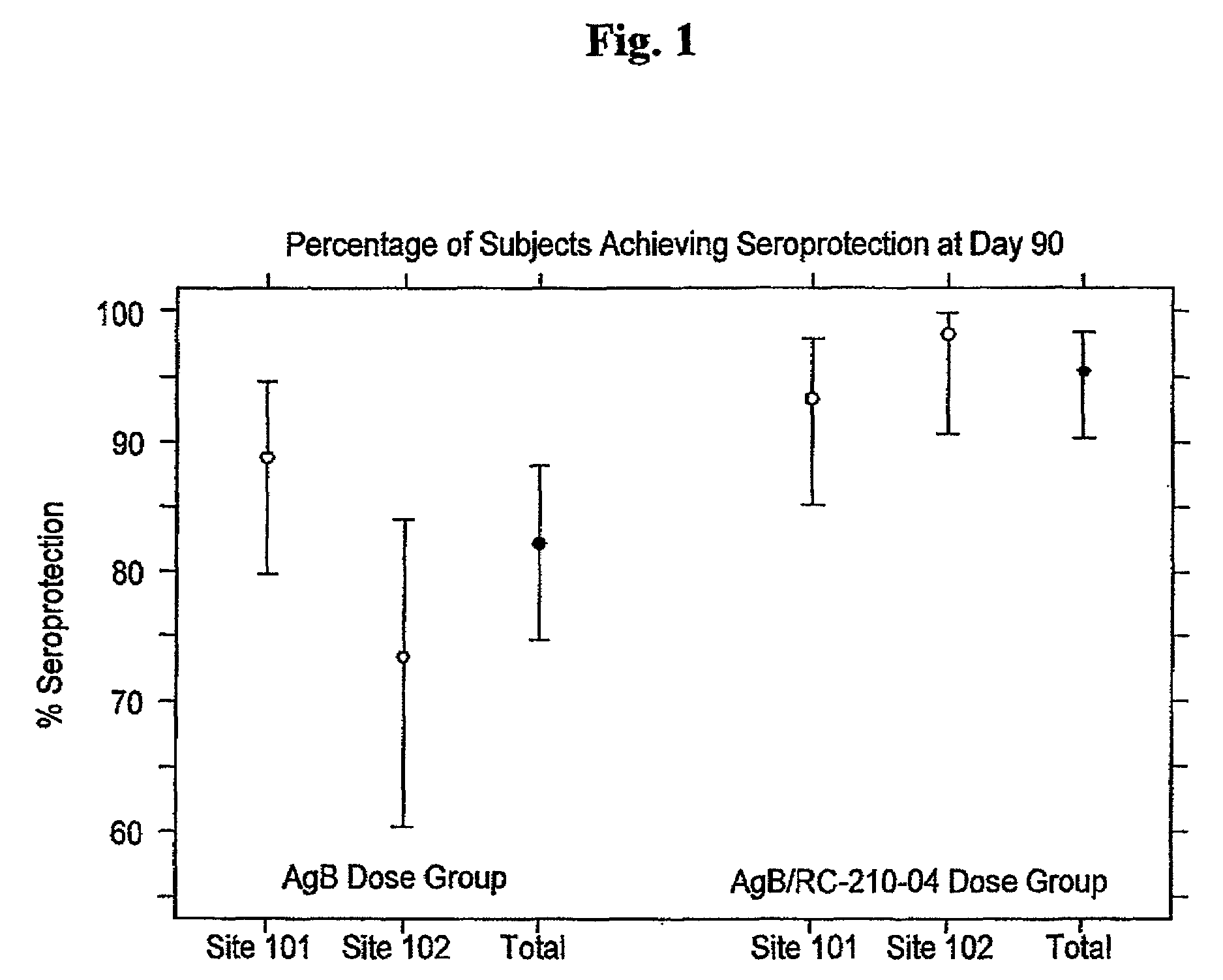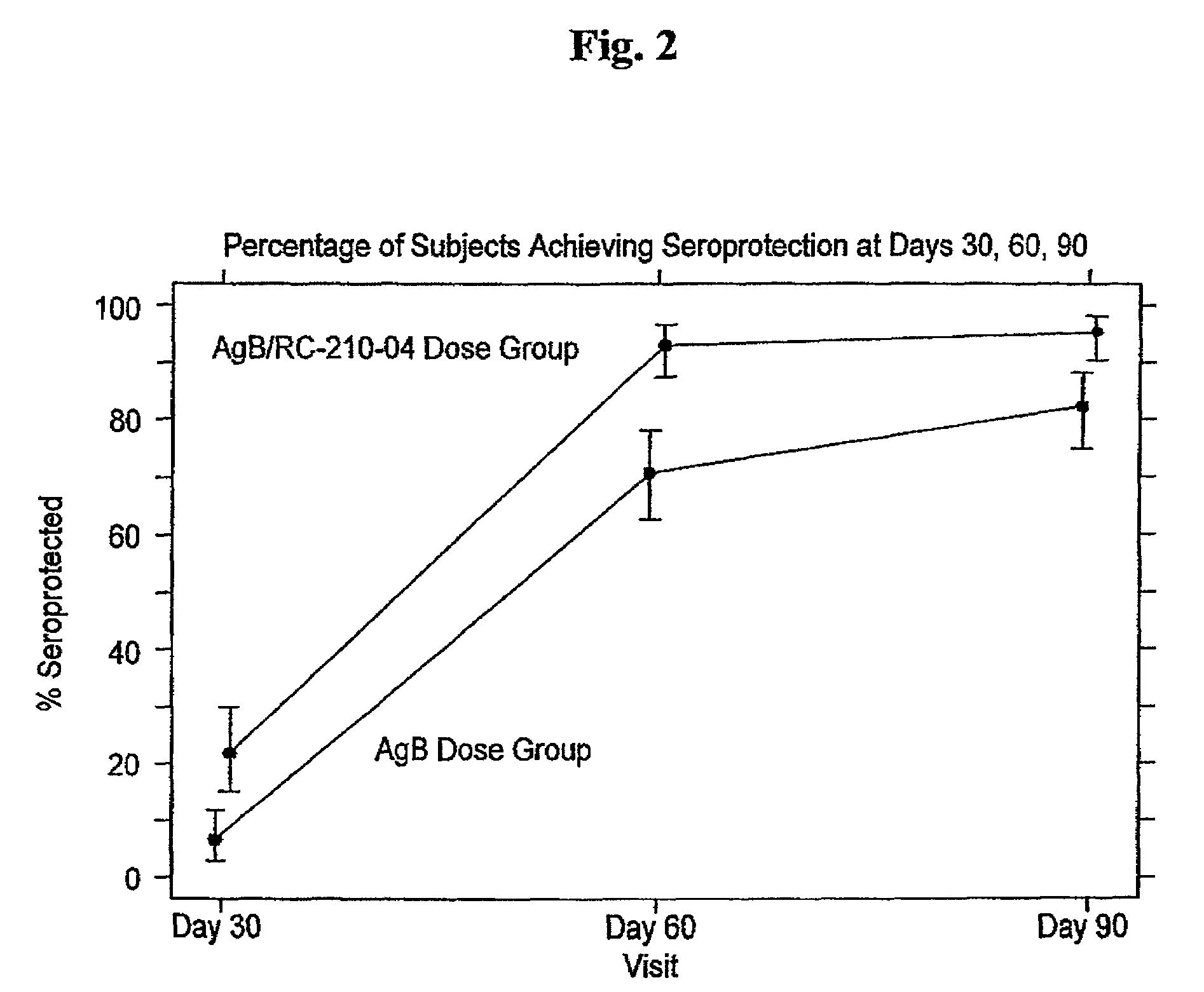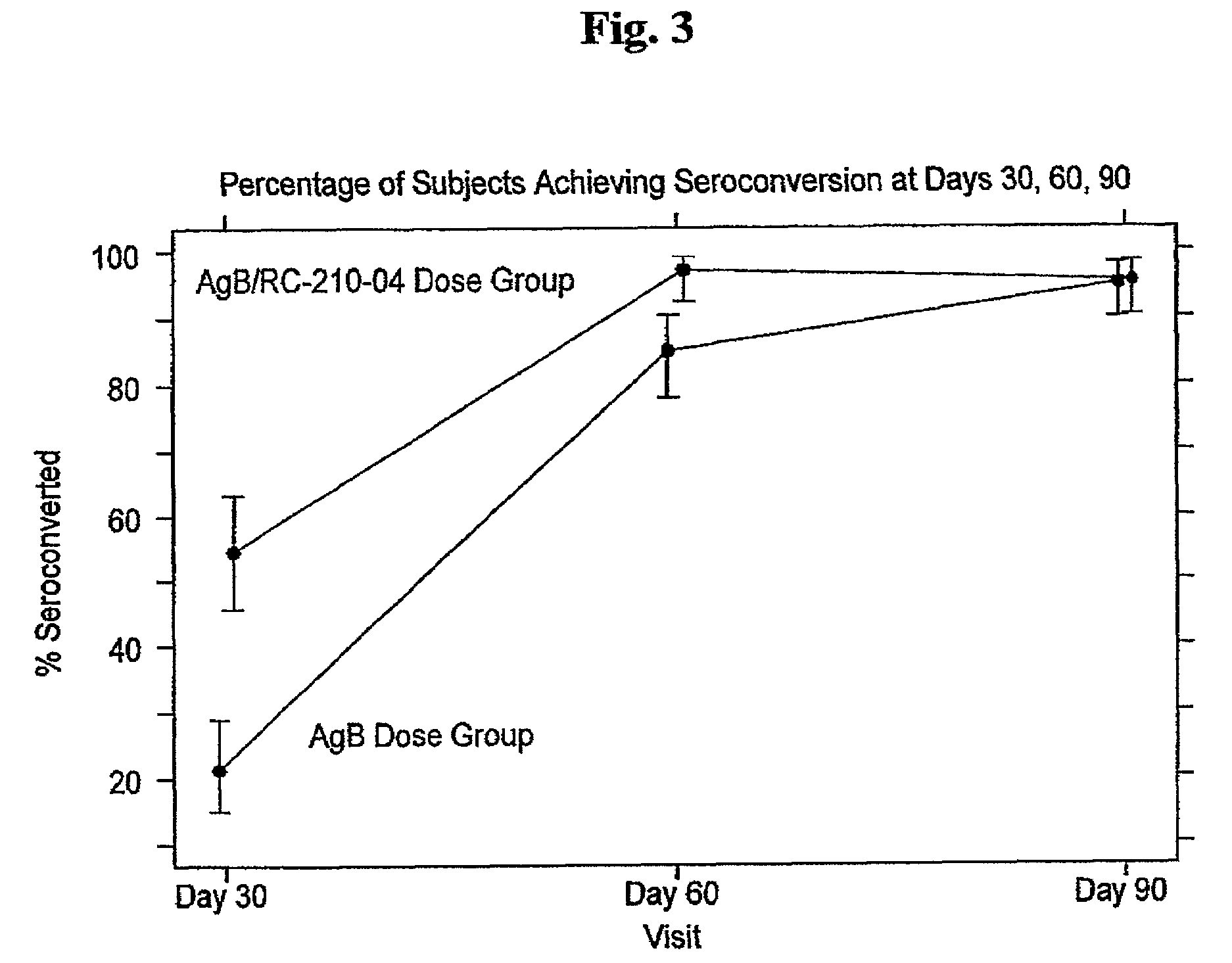Aminoalkyl glucosaminide phosphate compounds and their use as adjuvants and immunoeffectors
a technology of aminoalkyl glucosaminide and phosphate, which is applied in the field of aminoalkyl glucosaminide phosphate (agp) compounds, can solve the problems of low immunogenicity, and low molecular weight synthetic antigens,
- Summary
- Abstract
- Description
- Claims
- Application Information
AI Technical Summary
Benefits of technology
Problems solved by technology
Method used
Image
Examples
example 1
Preparation of (R)-3-N-Alkanoyloxytetradecanoic Acids (4)
[0123](1) A solution of methyl 3-oxotetradecanoate (19 g, 0.074 mol) in MeOH (100 mL) was degassed by sparging with argon (15 min). [(R)-Ru(Binap)Cl]2·NEt3 catalyst (0.187 g, 0.111 mmol) and 2 N aqueous HCl (0.5 mL) were added and the resulting mixture was hydrogenated at 60 psig and 40-50° C. for 18 h. The reaction was diluted with hexanes (250 mL), filtered through a short column of silica gel, and concentrated. The crude product was dissolved in tetrahydrofuran (THF; 200 mL), treated 2.4 N aqueous LiOH (83 mL, 0.2 mol) and stirred vigorously at room temperature for 4 h. The resulting slurry was partitioned between ether (200 mL) and 1 N aqueous HCl (200 mL) and the layers separated. The aqueous layer was extracted with ether (100 mL) and the combined ethereal extracts were dried (Na2SO4) and concentrated. The crude hydroxy acid was dissolved in hot acetonitrile (250 mL), treated with dicyclohexylamine (DCHA; 17 mL, 0.085 mo...
example 2 (
B1)
Preparation of 3-Hydroxy-(S)-2-[(R)-3-tetradecanoyloxytetradecanoylamino]propyl 2-Deoxy-4-O-phosphono-2-[(R)-3-tetradecanoyloxytetradecanoylamino]-3-O-[(R)-3-tetradecanoyloxytetradecanoyl]-β-D-glucopyranoside Triethylammonium Salt (Compound (I), R1═R2═R3═N—C13H27CO, X═Y═O, N=M=Q=0, R4═R5═R7═R9═H, R6═OH, P=1, R8═PO3H2)
[0132](1) To a solution of 2-(trimethylsilyl)ethyl 2-amino-2-deoxy-4,6-O-isopropylidene-β-D-glucopyranoside (6.46 g, 20.2 mmol) in CHCl3 (300 mL) was added 1 N aqueous NaHCO3 (300 mL) and 2,2,2-trichloroethyl chloroformate (8.5 g, 40 mmol). The resulting mixture was stirred vigorously for 3 h at room temperature. The organic layer was separated, dried (Na2SO4) and concentrated to give a colorless syrup. Flash chromatography on silica gel (gradient elution, 30→40% EtOAc-hexanes) afforded 9.6 g (96%) of 2-(trimethylsilyl)ethyl 2-deoxy-4,6-O-isopropylidine-2-(2,2,2-trichloroethoxycarbonylamino)-β-D-glucopyranoside as a colorless solid: mp 69-70° C.; 1H NMR (CDCl3) δ 0.0...
example 3 (
B2)
Preparation of 3-Hydroxy-(R)-2-[(R)-3-tetradecanoyloxytetradecanoylamino]propyl 2-Deoxy-4-O-phosphono-2-[(R)-3-tetradecanoyloxytetradecanoylamino]-3-O-[(R)-3-tetradecanoyloxytetradecanoyl]-β-D-glucopyranoside Triethylammonium Salt (Compound (I), R1═R2═R3═N—C13H27CO, X═Y═O, N=M=Q=0, R4═R5═R7═R9═H, R6═OH, P=1, R8═PO3H2)
[0142](1) A solution of the compound prepared in Example 2-(5) (0.63 g, 1.02 mmol) in CH2Cl2 (7 mL) was treated sequentially with pyridine (0.4 mL, 5 mmol), 4-dimethylaminopyridine (cat.) and 2,2,2-trichloro-1,1-dimethylethyl chloroformate (0.307 g, 1.23 mmol) and stirred for 16 h at room temperature. The reaction mixture was diluted with CH2Cl2 (25 mL), washed with saturated aqueous NaHCO3 (25 mL) and dried (Na2SO4). Removal of volatiles in vacuo gave a residue that was dissolved in THF-AcOH (10 mL, 9:1) and hydrogenated in the presence of 5% palladium on carbon (150 mg) at room temperature and atmospheric pressure for 24 h. After removal of the catalyst by filtrati...
PUM
 Login to View More
Login to View More Abstract
Description
Claims
Application Information
 Login to View More
Login to View More - R&D
- Intellectual Property
- Life Sciences
- Materials
- Tech Scout
- Unparalleled Data Quality
- Higher Quality Content
- 60% Fewer Hallucinations
Browse by: Latest US Patents, China's latest patents, Technical Efficacy Thesaurus, Application Domain, Technology Topic, Popular Technical Reports.
© 2025 PatSnap. All rights reserved.Legal|Privacy policy|Modern Slavery Act Transparency Statement|Sitemap|About US| Contact US: help@patsnap.com



